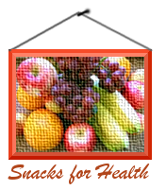The Eighth Weight Loss Basic:
Dieting For Weight Loss
Congratulations on getting this far, it shows you have the motivation and desire to succeed. We now come to the eighth weight loss basic: Understanding Weight Loss Basics – 6: Dieting for Weight Loss. Although all the other basics are important to understand, this is probably the more important of them all.
Understanding Weight Loss Basics – 6:
Dieting To Lose Weight
There are many types of diets: Diabetic; gluten free; diets which exclude dairy products; diets to reduce cholesterol; being just a few which are used, primarily, to maintain the health of people who suffer from certain medical conditions.
dairy products; diets to reduce cholesterol; being just a few which are used, primarily, to maintain the health of people who suffer from certain medical conditions.
The diets we are concerned with are weight loss diets whose primary aim is to maintain your health while reducing your daily calorie consumption.
As always, it is advisable to consult your doctor if you have decided to lose weight, but If you are on a special diet to control a medical condition or are over forty pounds overweight, it is extremely important that you consult your medical practitioner before embarking on any dieting for weight loss program.
Understanding Weight Loss Basics – 6: Do’s And Don’ts
Understanding Weight Loss Basics – 6, details below a some of the do’s and don’ts that you need to take on board if you are serious about losing weight.
- Do use common sense; don’t try skipping meals, particularly breakfast, considered by many to be the main meal of the day, as it helps maintain the energy levels you need throughout the day.
- Do eat sensibly. A minimum of three healthy calorie-controlled meals a day is the
 way to go, with a healthy snack such as fruit, especially a banana; a low-fat, low-calorie yogurt; or a sandwich made with wholemeal bread and lean meat, are just some of the healthy foods you can snack on in between meals if needed.
way to go, with a healthy snack such as fruit, especially a banana; a low-fat, low-calorie yogurt; or a sandwich made with wholemeal bread and lean meat, are just some of the healthy foods you can snack on in between meals if needed.
If convenient you may find that six smaller meals, taken at regular intervals, may suit you better, it really doesn’t matter as long as you keep within your daily calorie reduction target.
- Do make sure that your daily diets contain the correct amount of nutrients to maintain your health. There are many low calorie foods that are known as empty calorie foods, see Empty Calorie Foods as they contain very little or no nutrients at all. Avoid them!
- Don’t try cutting out any of the essential nutrients in an effort to reduce your daily calorie intake, it is definitely to be avoided. Your body needs a balanced amount of protein, carbohydrates and fat to provide energy and the vitamins and minerals needed to keep you healthy.
- Don’t fall into the trap of thinking one or two junk meals a week won’t do any harm, not only are they loaded with calories they are also extremely high in saturated and trans fats, not the healthiest way to low cholesterol and a healthy heart!
- For example, a regular sized hamburger on a bun with condiments contains two hundred and seventy nine calories and over ten and a half grams of fat. Fancy a double regular hamburger? Be prepared to consume five hundred and seventy six calories and thirty two and a half grams of fat.
- Throw in a small portion of French fries cooked in vegetable oil to go with your burger and you can add another two hundred and seventy calories and fourteen and a half grams of fat.
- Think about it. A regular burger with a small portion of fries, twice a week, contains a total of one thousand and ninety eight calories and fifty grams of fat.
- A double regular burger with a small portion of fries, twice a week, contains a total of one thousand six hundred and fifty two calories and ninety four grams of fat. If you still decide to eat a couple of junk meals a week I suggest you forget about any weight loss ambitions you may have as you probably won’t reach first base!
Skipping meals will only lead to reduced energy levels and snacking on foods such as chocolate bars, potato crisps or chips, biscuits, pastries, etc, they may be ok as a treat once or twice a week, but not on a regular basis.
Dieting for weight loss need not be expensive; there are hundreds of recipes in magazines and on the net that you can utilize for your personal use. You can “mix ‘n match” using ingredients that you like from various recipes providing they contain the balanced amount of nutrients your body needs and the correct amount of calories to maintain your daily calorie reduction target.
I will be publishing some low-fat, low-calorie recipes that you may find helpful later in the section on DIET.
Although, as previously stated, dieting for weight loss is a challenge, it can be quite interesting and educational. Why not try making a list of foods you like, and maybe some you have never tried but look interesting? You can then research their nutrient and calorific values and prepare your own recipes. Who knows, someday you may publish your own weight loss recipe book!
In Understanding Weight Loss Basics – 6 we concentrated on dieting do’s and don’ts. In Article 7 we will take look at Vitamin and Mineral Supplements.
